Japanese Prime Minister Fumio Kishida has been on a diplomatic blitz in recent days. First he hosted the South Korean President Yoon Suk Yeol breaking the ice in the frosty ties that troubled the two Asian neighbours for quite some time. He then hosted the German Chancellor Olf Scholz before heading to New Delhi for talks with Indian Prime Minister Narendra Modi. This was Kishida’s first visit to India as Prime Minister and the first annual India-Japan Annual Summit meeting with his Indian counterpart. The day he concluded his two-day 19-20 March visit to India, instead of returning to Japan, in a surprise move, he flew to Poland, where he boarded a train to cross into Ukraine and reached Kyiv to meet Ukrainian President Volodymyr Zelenskyy on 21 March 2023 to offer “solidarity and unwavering support”.[1] He returned to Poland on 22 March for summit talks before flying back to Tokyo on 23 March.
Kishida is the last G-7 leader to visit the war-torn country and came under increasing pressure to make the trip, as Japan hosts the G-7 summit in May in Hiroshima. The G-7 nations have taken a unified approach in sanctioning Russia. Kishida is reportedly considering inviting Zelenskyy to attend.
Earlier the US President Joe Biden made a surprise stop to meet Zelenskyy in February to express solidarity. Amidst security risks, by making the trip Kishida became the first Japanese Prime Minister to visit an active warzone since World War II.[2] Kishida’s visit coincided with Chinese President Xi Jinping’s visit to Moscow for talks with Russian leader Vladimir Putin. The Ukraine conflict was high on the agenda.
Since Russia’s military operation of Ukraine, many Western countries have imposed crippling sanctions on Russia and offered support to Kyiv. Japan too has imposed sanctions and took rare steps by sending defensive equipment and offered refuge to those fleeing the conflict. Though many Western countries have sent arms and equipments to bolster Ukraine’s fighting capability, Japan is not able to offer military support because its Constitution limits its military capacity to ostensibly defensive measures. It may be recalled that in 2022 Kishida made a speech wherein he warned that “Ukraine today may be East Asia tomorrow” as the fear looms large that China might invade democratic, self-ruled Taiwan as it considers the island as a renegade province and must be integrated with the mainland. Japan is concerned about China’s actions in the Senkaku Islands, South China Sea, besides the Taiwan Straits. It has already set up a military base in its Ishigaki Island close to Okinawa to deter China’s advance into the East China Sea. The biggest concern is that China seems determined to unilaterally change the status quo and this cannot be condoned.
The security environment in Japan’s neighbourhood has become very severe. Despite the US protection of nuclear umbrella, its fear to the country’s security is real. Since it is unable to amend the peace clause, Article 9 of the Constitution, because of complicated procedure, Kishida administration finds compelling reason to hike the country’s defence expenditure by breaking the self-imposed cap of not exceeding 1 per cent of the country’s GDP. In its largest defence shake-up in decades, Japan has set a goal of doubling defence spending to the NATO standard of two percent of GDP by 2027. That would take time to realise but Japan needs to be on its guard as the reactions of other Asian nations might not be palatable to Japan’s concerns because of their historical experiences.
Significance of Kishida’s India Visit
Against this background, the significance of Kishida’s India visit needs to be understood. During his bilateral talks with Prime Minister Modi, Kishida urged India to take a common stand on the importance of maintaining international order in light of the Ukraine war. Kishida’s remarks were strategically timed as it came the same day Xi landed in Moscow to discuss the conflict with Putin. Besides the strategic considerations and ideological commonality, China has deep economic interests in Russia as it seeks source of oil and gas for its economy in the wake of deteriorating economic ties with the US. China also sees Russia as a partner in standing up to the US and European countries and their domination of global affairs.
- While Kishida is going to host the G-7 summit in Hiroshima scheduled for 19-21 May and India as the G-20 Chair hosts the summit in September, it was timely that both leaders discussed the agendas. India could find itself in a strategic dilemma. Here two aspects need to be highlighted. One, Kishida’s visit to Ukraine seems to have scored a point over Xi-Putin meet and this angers China. Two, the Ukraine war seems to have brought China and Russia closer and given India’s close ties with Russia, India may have to weigh its strategy carefully. Thirdly, there is every possibility that during the G-20 meeting, both China and Russia might oppose any move to defend Ukraine. The failure to issue a joint statement during Foreign Ministers’ meeting in New Delhi in early March is an indication that India’s policy of strategic autonomy would be put to test. This would be also a new challenge to the Indo-Pacific strategy that major democratic countries are espousing.[3]
Issues such as debt financing, food and energy security, and climate change figured prominently in the discussion as both Kishida and Modi as leaders of G-7 and G-20 blocs concur on such issues. Though India is not an official member of the G-7 bloc of the world’s seven most developed countries, Kishida requested Modi to be a special invitee along with Brazil, Indonesia, Australia, South Korea, Vietnam, the Cooks Islands and Comoros. Modi accepted the invitation. There was news in circulation that Ukrainian President Zelenskyy has been invited to address the G-7 summit virtually. Given the stances of Russia and China, that could pose a challenge for Kishida because his decision might be challenged by both Russia and China. In September 2022, Modi was lauded by Kishida for his statement that “this era is not of war” and therefore Kishida hopes Modi would be more “forthcoming” during the 19-21 May G-7 summit. Both the G-7 and G-20 blocs have similar views on issues such as “development finance, food security, climate change and energy”.
While accepting Kishida’s invitation, Modi stressed priorities need to be given to the Global South. As an important pillar of the G-20 and India as the President it has responsibility to focus on that. The India-Japan Special Strategic and Global Partnership based on shared democratic values, respect for the rule of law in the international arena shall be the enabler to materialise such goal.
Kishida’s Vision of FOIP
Kishida delivered the 41st Sapru House Lecture at the Indian Council of World Affairs, where he put his own stamp on Japan’s Indo-Pacific strategy. It was termed as the “New Plan for a Free and Open Indo-Pacific (FOIP) framework and included a massive infrastructure and economic assistance programme for countries in the “Global South”.[4]
Kishida outlined some of his perspectives for Japan’s “New Plan for FOIP” involving four pillars: Principles for Peace and Rules for Prosperity, including the use of the World Trade Organisation, US’ Indo-Pacific Economic Forum (IPEF), an economic partnership for infrastructure development with Bangladesh, and debt restructuring for Sri Lanka. He also touched upon issues such as challenges like climate change, health and cyberspace, connectivity in Southeast Asia, South Asia, and the Pacific Islands region, and security in the Indo-Pacific region.
The canvas of Kishida’s idea was wide. It covered the entire ASEAN nations and the Pacific island countries and also covered Middle East, Africa and Central and South America, which share the vision of FOIP and promote in the spirit of cooperation.[5] He stressed the importance of defending peace as the Ukraine crisis poses a fundamental challenge to the world and therefore there is an urgent need for a common perspective on what international order would serve the interest for all nations. This statement is significant as India has stayed away from criticising Russia’s actions openly and even abstained from United Nations resolutions. This does not imply that India endorses Russia’s actions on Ukraine but prefers solution to peace through dialogue and diplomacy. After all, there is universal view from the world leaders that the crisis in Ukraine must end but the differences among nations to find means of restoring peace has become problematic. Here lies the challenge for India to play its diplomatic card. Given that India’s voice has weight in global affairs, much expectations are there on how Modi plays his diplomatic card and take all together to make the G-20 summit a success.
Bilateral Issues
Several bilateral issues were also discussed. Both Kishida and Modi exchanged documents on the financing of the next (IVth) tranche of Japanese funding for a loan of 300 billion yen from the Japan International Cooperation Agency (JICA) for the Mumbai-Ahmadabad High Speed Rail or Bullet Train project as well as a MoU on Japanese language education for the MEA. Kishida said Japan plans to mobilise a total of $75 billion in public and private funds by 2030. In particular, he mentioned coordinating with India for projects as a part of a “Bay of Bengal-Northeast India industrial value chain” concept.
The JICA and India had signed a loan agreement in 2022 for an Official Development Assistance (ODA) loan of 100,000 million Japanese Yen (approx. ₹6,000 Crore) which was the Trache 3 on the 'Project for the Construction of Mumbai-Ahmadabad High-Speed Rail (MAHSR).' The primary goal of the initiative is to enhance mobility in India and contribute to regional economic growth by constructing a high-speed rail, utilizing Japan's advanced Shinkansen technology, to establish a high-frequency mass transit system between Mumbai and Ahmadabad. Kishida’s remark was strategically timed as it came the same day Xi was in Moscow to discuss the Ukraine crisis with Putin.
Though economic relations between the two countries are strong, they have not been exploited to their full potentials. Trade between the two was worth $20.57 billion in fiscal 2021-2022. The Japanese investment in India touched $32 billion between 2000 and 2019. The potentials are huge but these figures do not reflect the true depth of the relationship as compared to Japan’s economic ties with China, for example. From Kishida’s Sapru House lecture it transpired that apart from his promotion of the FOIP for greater security and economic cooperation geared towards curbing Beijing growing assertiveness, Japan is committed to provide assistance to emerging economies, support for maritime security, a provision of coast guard patrol boats and equipment and other infrastructure cooperation. Such a strategy also fits in with Japan’s new national security strategy adopted in December 2022 under which Tokyo plans to deploy long-range cruise missiles to strengthen its strike-back capability and also using development aid more strategically in support of like-minded countries. [6]
Concluding Observations
While the Ukraine crisis shall bother Modi when he hosts the G-20 summit in September 2023 as differences are likely to be sharp between certain countries with Modi in the mix as the chair to navigate through the turbulent waters, his presence in the G-7 summit in Hiroshima in May 2023 as an observer shall provide an opportunity to gauge the position that some nations take on the Ukraine issue. At bilateral level, both the countries celebrated 70 years of relationship in 2022. The relationship elevated from a Global Partnership to a Special Strategic and Global Partnership is something unique reflecting the significance both attach to the relationship and the convergence of strategic and economic interests. Despite the civilizational linkages and growing bonhomie, there are many gaps such as people-to-people contacts, for example, that need to be plugged.
This does not mean to suggest that Japan has overlooked this aspect. But regretfully the investment that Japan has made in the cultural field despite the presence of its official organ Japan Foundation in India for over three decades and other official instrumentalities vis-a-vis other Asian countries, one gets a dismal picture. Kishida missed the bus as this aspect was overlooked. Language promotion initiative is laudable but what one would expect is more exchanges of people, namely youth, workforce, and artists and emphasis to promote tourism. This is found wanting and this aberration must be corrected. Relationship cannot only be judged in strategic and economic terms alone to sustain for the future. The people ought to be partners in this venture and there has to be schemes to take them on board. It is hoped Prime Minister Modi takes up this issue with Kishida when he meets him next in person to elevate and put the relationship at a higher gear.
Endnotes :
[1]Jesse Johnson, “Kishida makes surprise visit to Ukraine for talks with Zelenskyy”, The Japan Times, 21 March 2023, https://www.japantimes.co.jp/news/2023/03/21/national/politics-diplomacy/kishda-ukraine-visit-zelenskyy/?utm_source=pianoDNU&utm_medium=email&utm_campaign=72&tpcc=dnu&
[2] “Japan PM Kishida to meet Zelenskyy in surprise Kyiv visit”, 21 March 2023, https://www.channelnewsasia.com/world/japan-pm-fumio-kishida-meet-ukraine-president-volodymyr-zelenskyy-surprise-kyiv-visit-3362161
[3] “Xi-Putin talks hint at new tests for India”, Hindustan Times, editorial, 23 March 2023.
[4]Jesse Johnson and Gabriel Dominguez, “With renewed push, Kishida looks into put his own stamp on Japan’s Indo-Pacific strategy”, The Japan Times, 21 March 2023, https://www.japantimes.co.jp/news/2023/03/21/national/politics-diplomacy/fumio-kishida-investment-foip-china/?utm_source=pianoDNU&utm_medium=email&utm_campaign=72&tpcc=
[5]Gabriel Dominguez, “Kishida uses India trip to push ‘free and open Indo-Pacific’ vision”, The Japan Times, 20 March 2023, https://www.japantimes.co.jp/news/2023/03/20/national/kishida-india-indo-pacific-vision/
[6]Sheikh Saaliq and Mari Yamaguchi, “Japan PM Kishida announces new Indo-Pacific plan in India”, 20 March 2023, https://news.yahoo.com/japan-pm-kishida-announce-indo-064649845.html?fr=sycsrp_catchall
(The paper is the author’s individual scholastic articulation. The author certifies that the article/paper is original in content, unpublished and it has not been submitted for publication/web upload elsewhere, and that the facts and figures quoted are duly referenced, as needed, and are believed to be correct). (The paper does not necessarily represent the organisational stance... More >>
Image Source: https://newsonair.com/wp-content/uploads/2023/03/WhatsApp-Image-2023-03-11-at-13.30.05-696x392.jpeg

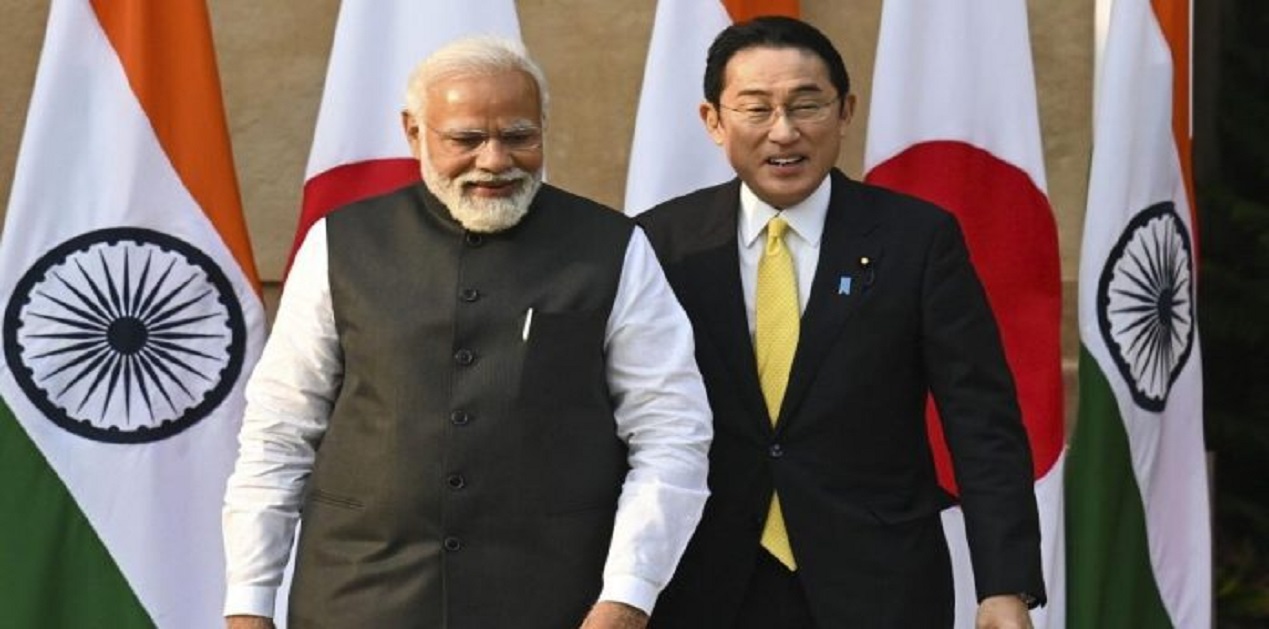

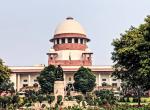
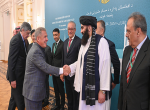
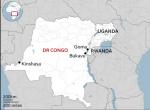

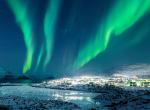



Post new comment